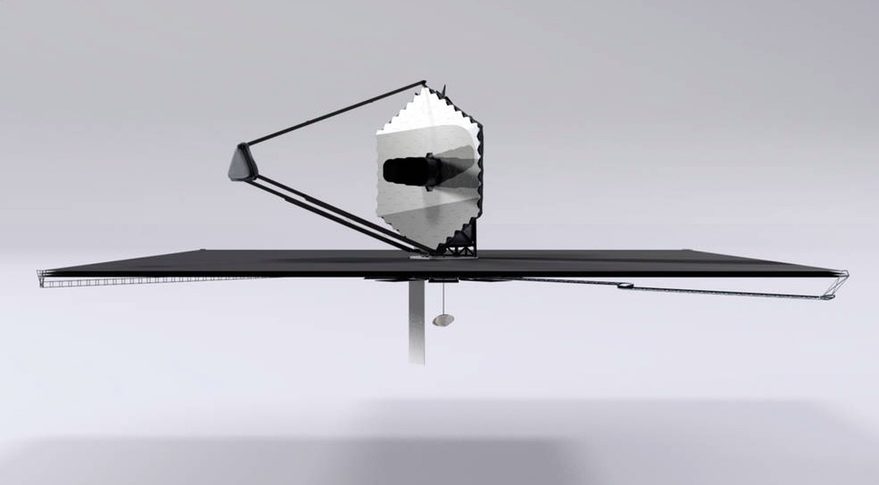NASA Imposes Cost Caps On Astrophysics Flagship Studies

WASHINGTON — NASA has directed teams studying proposed flagship-class missions for the next astrophysics decadal survey to fit their concepts within cost caps that could force major changes to their designs.
In a May 31 statement, NASA said it has instructed the four teams studying proposed missions for consideration by the 2020 decadal survey to "narrow the scope" of their concepts so that their total cost is between $3 billion and $5 billion. That new cap, the statement said, reflected "current and anticipated budget constraints" for the agency's astrophysics programs.
NASA chartered the four studies in 2016 to support the decadal survey, each devoted to a specific proposed mission. Those studies are intended to discuss the scientific rationales for the missions and describe their design, including cost estimates. The studies, prior to now, did not have any firm cost caps.
"The programmatic landscape has changed since the initial studies," said Paul Hertz, director of NASA's astrophysics division, in a statement about the new cost caps. "We need to ensure we can accomplish breakthrough science while adhering to a realistic, executable scope and budget for the next decade."
Hertz didn't elaborate on those changes in the statement, but astronomers working on those studies said they were told delays in the James Webb Space Telescope and uncertainty about the status of the Wide-Field Infrared Survey Telescope (WFIRST), which the administration proposed for cancellation in its 2019 budget request, played a major role in that decision.
Another factor, those astronomers said, is a shift in priorities at NASA from astrophysics to its human spaceflight program, in particular its "Exploration Campaign" of lunar missions. While NASA's astrophysics programs, including JWST, received nearly $1.4 billion in the fiscal year 2018 omnibus spending bill, the 2019 request offered less than $1.2 billion for astrophysics and projected flat spending through fiscal year 2023.
A cost cap of $5 billion is significantly less than the budget of JWST, which is in danger of breaching a $8 billion cost cap because of its recent problems. WFIRST, by contrast, has a cost cap of $3.2 billion but had to make changes, such as turning one of its instruments into a technology demonstration, in order to fit within that cap.
Get the Space.com Newsletter
Breaking space news, the latest updates on rocket launches, skywatching events and more!
NASA has previously emphasized that WFIRST is a far less technically challenging mission than JWST that can also take advantage of donated hardware, notably a 2.4-meter telescope assembly offered by the National Reconnaissance Office.
At least one of the four mission studies, though, claims to be exempt from this new directive. The Large UV/Optical/IR Surveyor (LUVOIR) mission would develop a space telescope with a primary mirror up to 15 meters in diameter, intended to support a broad range of astronomical research in ultraviolet through infrared wavelengths. JWST, by comparison, has a primary mirror 6.5 meters across.
In a statement posted to its website, the LUVOIR team acknowledged that it and the other study teams received instructions from NASA Headquarters "to produce versions of their concepts that fit into the $3-5B cost box." However, it added, "LUVOIR was exempt from this instruction." It didn't explain why and how it was granted an exemption.
Among the other missions being studied is the Habitable Exoplanet Imaging Mission (HabEx), a space telescope designed to directly image exoplanets and look for evidence of habitability; Lynx, an X-ray observatory intended to be a successor to the Chandra X-Ray Observatory but with far greater sensitivity; and Origins Space Telescope, a far-infrared space telescope with a primary mirror 9 meters across to study the early universe and look for biosignatures around nearby exoplanets.
Even before the announcement of a cost cap, NASA officials had suggested that astronomers would have to take new approaches to large mission concepts to fit within projected budgets.
"I think even in the most optimistic of all worlds, we're not going to double the astrophysics budget," said Thomas Zurbuchen, associate administrator for science, at a May 2 meeting of the National Academies' Space Studies Board. "In the absence of such a doubling, how are we going to look at a balanced program across disciplines?"
He added he believed that many astronomers were seeking to develop the next flagship astrophysics mission within the same paradigm as previous ones. "For most of the missions, we don't want to do exactly what we did two decades ago," he said. "It's time for new thought."
"NASA has always been known for thinking outside the box and accomplishing what was thought to be impossible," Hertz said in the May 31 statement. "I am optimistic we will continue to do so for the next flagship mission."
NASA plans to deliver those reports to the National Academies committee working on the decadal survey in mid-2019, although the agency said in its statement that that deadline could be pushed back. The committee will use the studies to inform its work on identifying the highest priority missions NASA should undertake in the next decade but is not required to select from among those four concepts when it chooses its top priority large-scale, or flagship, mission.
This story was provided by SpaceNews, dedicated to covering all aspects of the space industry.
Join our Space Forums to keep talking space on the latest missions, night sky and more! And if you have a news tip, correction or comment, let us know at: community@space.com.

Jeff Foust is a Senior Staff Writer at SpaceNews, a space industry news magazine and website, where he writes about space policy, commercial spaceflight and other aerospace industry topics. Jeff has a Ph.D. in planetary sciences from the Massachusetts Institute of Technology and earned a bachelor's degree in geophysics and planetary science from the California Institute of Technology. You can see Jeff's latest projects by following him on Twitter.










